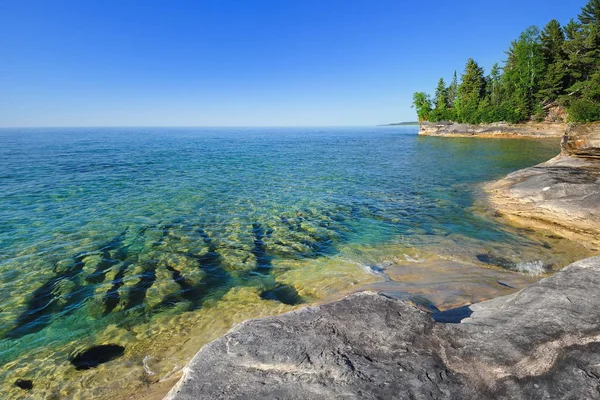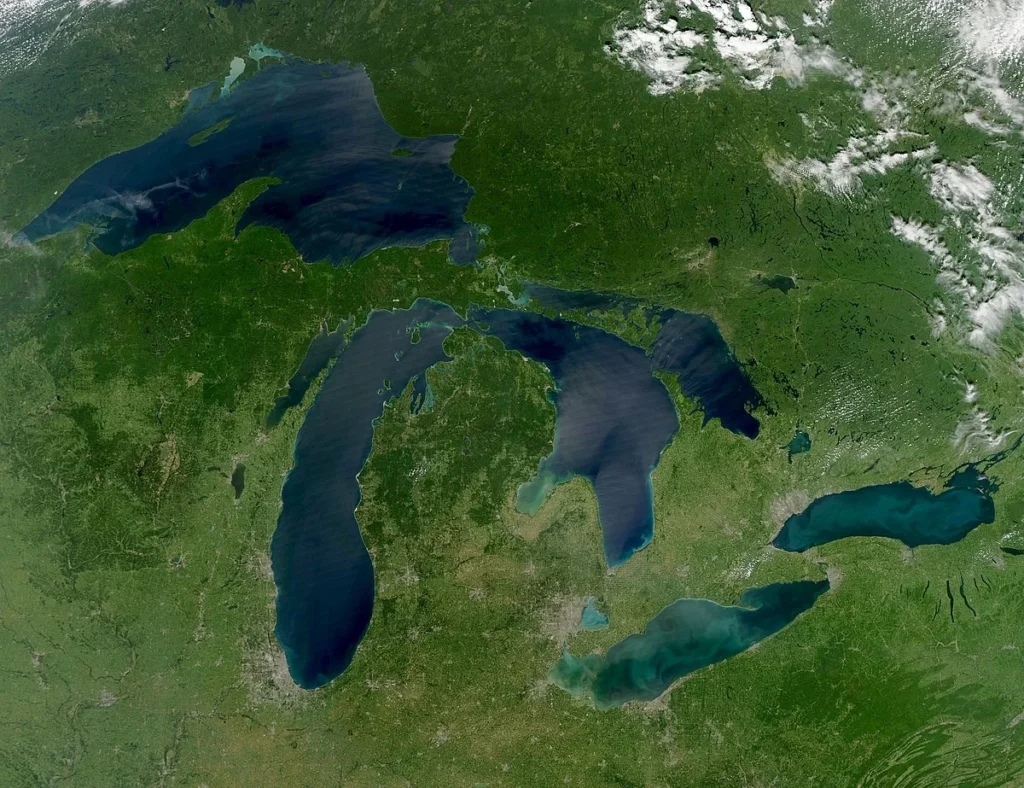The Great Lakes, comprising Superior, Michigan, Huron, Erie, and Ontario, face a concerning decline in ice cover for the second consecutive year.
About Great Lakes:
- The Great Lakes are five large freshwater lakes in east-central North America:
- Lake Superior: The largest by volume and deepest, larger than Scotland or South Carolina.
- Lake Michigan: The second-largest by volume and third-largest by area, and the only one entirely in the U.S.
- Lake Huron: The third-largest by volume and second largest in area.
- Lake Erie: The smallest by volume and shallowest.
- Lake Ontario: Smallest of the Great Lakes in North America, but its maximum depth is deeper than Lake Erie and Lake Huron.
- Four of the Great Lakes are on the border between Canada and the United States of America.
- The other, Lake Michigan, is completely inside the United States.
- They are the largest freshwater system in the world, representing 21% of the world’s fresh water and about 84% of North America’s surface fresh water.
- Collectively, these lakes constitute the largest group of freshwater lakes globally.
- While individually none of them surpasses the size of Lake Baikal (Russia) or Lake Tanganyika (East Africa), their combined volume makes them unparalleled in the world.
- Despite having distinct basins, the five lakes collectively constitute a single, interconnected body of freshwater.
- The lakes connect the east-central interior of North America to the Atlantic Ocean.
- The water flows from Lake Superior and Lake Michigan into Lake Huron, then through the Detroit River into Lake Erie, continuing through Niagara Falls into Lake Ontario, and finally, through the Saint Lawrence River to reach the Atlantic Ocean.
- Water also drains from the Chicago River on the south.
Ref:Source
| UPSC IAS Preparation Resources | |
| Current Affairs Analysis | Topperspedia |
| GS Shots | Simply Explained |
| Daily Flash Cards | Daily Quiz |



